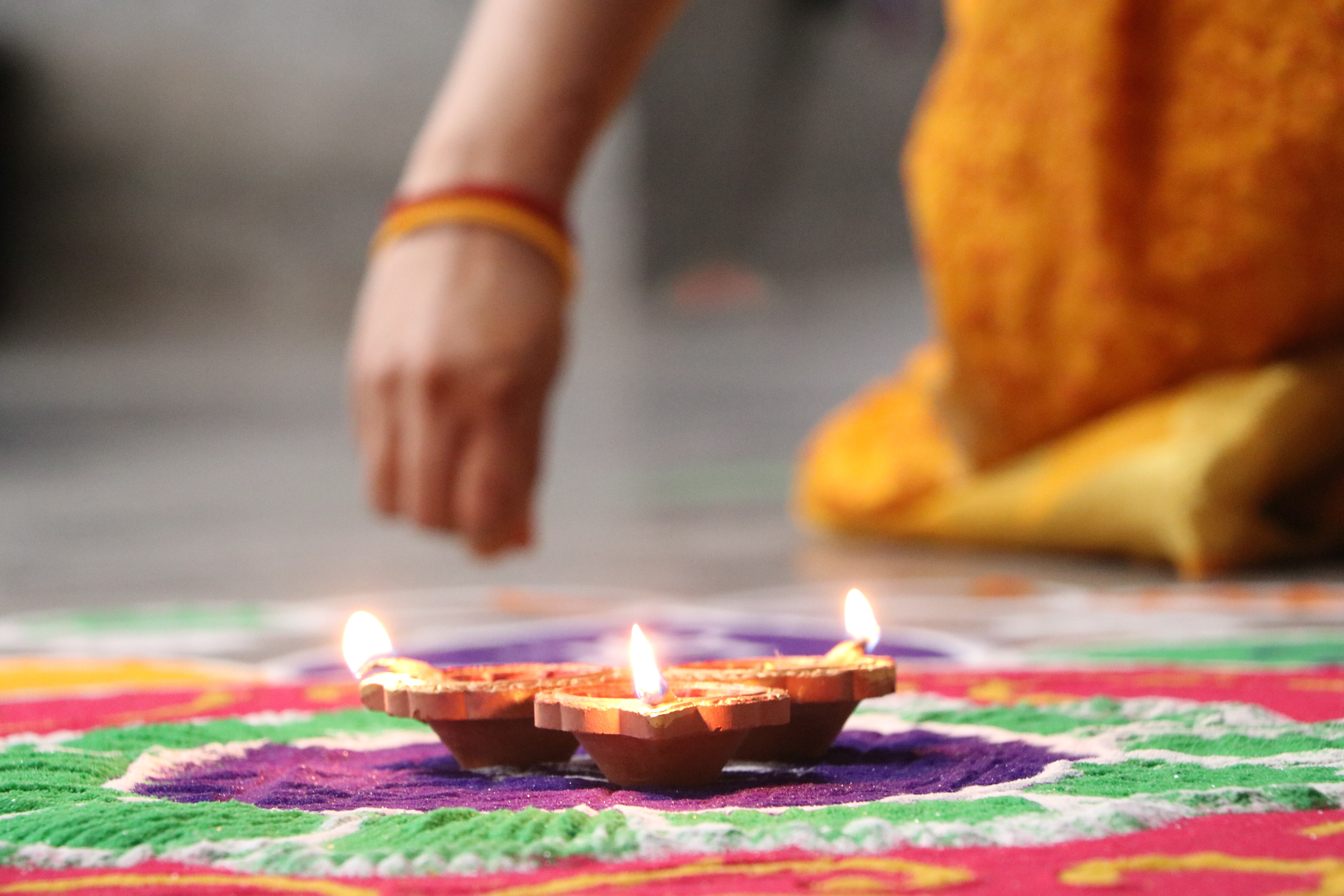清明节:读清明起源的故事,赏清明诗歌英译 Festivals for honoring the deceased from across the world
中国日报网 2021-04-04 09:00

无论身在何方,思念和怀旧是一种普世情怀,世界上只要有华人的地方,每逢清明节人们就会按照传统习俗,在当地眺望故里,遥寄追念。

【清明故事】
Qing Ming or Thanksgiving?
清明节源于感恩情怀
Qingming is popularly associated with Jie Zidui in the Spring and Autumn Period, who saved his starving lord's life by serving meat cut from his own leg. The lord, known as Jinwengong, was later able to take power and decided to reward Jie but he declined. Jinwengong tried to force Jie out of a forest by fire but instead burned him to death and felt deep regret. He ordered all his people to ban the use of fire and eat cold food that day to mark Jie's death. It is the origin of the Cold Food Festival, which starts one or 2 days before Qing Ming and later merges with Qingming. Qingming Festival then became an important holiday from an originally simple farming day.
春秋时期,介子堆曾割下自己腿上的肉让逃亡的晋国公子重耳充饥。重耳执政后要封赏他,但介子堆隐居山林拒绝封赏。无奈,晋文公重耳放火烧山想逼他出山,不料却烧死了恩人。自此,晋文公下令每年的这一天禁止生火,只吃冷食,这就是寒食节的来历。因寒食节恰好在清明前一两天,久而久之,寒食的习俗逐渐被移到清明中,清明便从单纯的农业节气变为重要节日"清明节"了。
【各国如何纪念逝者】
Orchid Basin Festival
日本: 摆放火盆迎祖灵
Falling on July 15th according to the lunar calendar, Orchid Basin Festival is one of the big events in Japan all people observe. Japan usually gives people 3 days off to go back to their hometowns to pay respect to their ancestors. It is said that the ancestors' spirits will return home, and so each household put fire basins outside at the gate and hang lanterns for the spirits to find their way back.
盂兰盆节是日本最盛大的节日之一,每年农历7月15日举行。日本全国放假3天,让城里人返乡祭祖。据说在这段时间,逝去的祖灵都会回到家中,为防止祖灵找不到家,人们会在家门口摆放欢迎的火盆,并在屋内挂上灯笼。

Diwali-Festival of Lights
印度: 点燃蜡烛纪念故人
Diwali or Deepavali, the festival of "rows of lights", is one of the most important of all Hindu festivals. People place candles on the stairs, hallway and balcony at home when night falls that day to pay respect to the deceased and pray for the family. Lighting lamps and candles during the festival is also considered auspicious by bringing light, knowledge and eternal life from darkness, ignorance and death.
灯节为印度每年最大的节日。节日当天,夜幕降临后,人们会在楼梯、走廊、阳台及屋里都放上点燃的蜡烛,为死者祈祷,并期盼亡灵保佑家人平安。点灯还被视为带来光明、知识、永恒,驱走黑暗、无知和死亡。

All Soul's Day
墨西哥: 化妆骷髅大游行
All Soul's Day, also called the "Day of the Dead" usually occurs on November 2, when families fondly remember the deceased by praying before an altar. It's also a time marked by festivities, including parades of skeletons. In one notable tradition, revelers lead a mock funeral procession with a live person inside a coffin.
万灵节是墨西哥的传统节日之一,又称扫墓节,定在每年11月2日。人们在家里摆祭坛,供上祭品,悼念死去的亲人。气氛浓厚的节日传统还包括化妆骷髅的盛大游行,以及把活人放进棺材里的"假面葬礼"。

Day of the dead
波兰: 点蜡烛给亡灵指路
Poland and most of the Catholic world have celebrated the festival on Nov 1 for many centuries. Also known as All Saints Day, it's a national holiday when people all over Poland visit the graves of loved ones and to place candles and flowers at tombstones. The candles, which can burn for hours, are placed to help the departed souls find the way home.
每年11月1日,波兰及绝大多数信奉天主教的国家都要举行亡人节,也称万灵节,以悼念逝人。这天是法定假日,人们都去扫墓,摆上鲜花并点上可燃烧几小时的蜡烛,给亡灵指引回家的路。

Memorial Day in US
美国: 鸣枪悼念阵亡烈士
Memorial Day is a US national holiday observed on the last Monday of May. It commemorates those who died while in military service to their country. Soldiers in service and veterans go to cemeteries to pay respect to their dead peers by firing guns and blowing trumpets. First enacted to honor American soldiers and casualties in the civil war, the two World Wars and other military actions, it later evolved as a popular civil festival for each family to commemorate the passing of their loved ones.
美国的阵亡烈士日通常在每年5月的最后一个周一,是法定假日。每逢这个日子,美国现役军人和老战士便前往墓地,鸣枪并吹响军中熄灯号,让死难将士安息。此节日最初用来纪念在南北战争和两次世界大战中战死的兵士,后来逐渐发展为一般家庭祭奠逝去的亲人。

【盘点:揭秘世界各地10种下葬方式】
1.earth burial - originated in the Stone Age and popular worldwide
土葬:产生于旧石器时代,流行于世界各地。
2.cremation - the most widely used
火葬:目前应用最广泛的下葬方式。
3.water burial - floating and soaking corpse and scattering ashes in waters, observed in Oceania
水葬:分为漂尸、投河和撒灰三种,多见于大洋洲一带。
4.celestial burial - the Tibetans believe corpse eaten by golden eagles could enter heaven
天葬:尸体被鹫鹰啄食,藏族人民认为死者这样可顺利升天。
5.hole burial - put the coffin in mountain holes
洞葬:在位于山腰的洞口摆放棺柩。
6.tree burial - bury ashes under a tree as a green funeral
树葬:把骨灰埋于树下,最环保的殡葬方式。
7.hanging coffin - common in ancient China by hanging coffin on mountains, the higher the better
悬棺葬:普遍用于中国古代,将木棺悬置于崖洞中。悬置越高,对死者越尊敬。
8.sand burial - corpse buried under the sand could be well preserved
沙葬:将死者装入麻袋,投入流沙,尸体脱水不会腐烂,可保存上千年。
9.wind burial - under the exposure of air
风葬:亦称"露天葬",将遗体裸露于树木或旷野中。
10.mummy - the most long-lasting method to preserve a corpse intact
木乃伊:即"人工干尸",尸体一般不会腐烂,可保存数千年。
【《清明》英译】
历代很多文人都曾将清明节作为诗词歌赋的对象,最熟知的要数唐代诗人杜牧的《清明》了。最后就跟大家一起欣赏这首诗的英译版本。
《清明》
(唐)杜牧
清明时节雨纷纷,
路上行人欲断魂。
借问酒家何处有?
牧童遥指杏花村。
许渊冲英译
A drizzling rain falls like tears on the Mourning Day;
The mourner's heart is going to break on his way.
Where can a wineshop be found to drown his sad hours?
A cowherd points to a cot 'mid apricot flowers.
(中国日报网英语点津 )

















 英语点津微信
英语点津微信 双语小程序
双语小程序